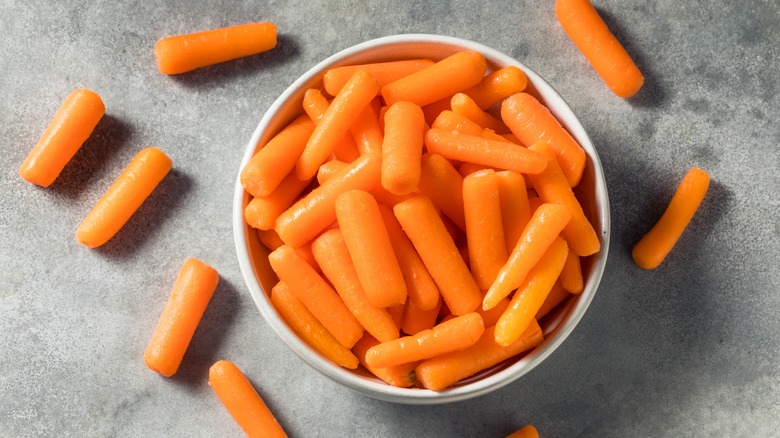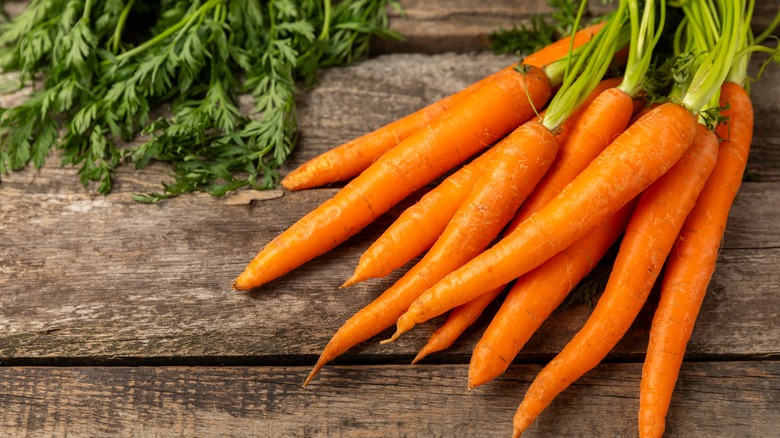Baby Carrots Aren't The Real Deal. Someone Lied To You Several Times
Baby carrots. They are everywhere. On vegetable platters, in your kid's lunchbox, and sitting around all bagged up in the produce aisle. Except they're probably not really baby carrots — they're more likely "baby-cut carrots." Real baby carrots look like the garden-grown vegetable that Peter Rabbit would munch on before getting into a pickle — they're truly smaller, and they're sweet and tasty. The baby carrots you're thinking of — because they have been marketed to you as such — are nubs that resemble tiny orange fingers. They are not pulled from the ground in this abbreviated state. They're actually fully grown and have been cut down to a smaller size in a machine, then scraped, rounded, and packaged.
If you're above a certain age and don't remember seeing baby-cut carrots in the store, that's because they didn't exist as such until 1986. That's when California carrot farmer Mike Yurosek came up with the idea for taking a fully grown carrot and cutting it to size. Yurosek was trying to figure out how to sell misshapen carrots to local grocery stores and decided to hand-cut them. Promoting carrots in this way really worked. Now, it seems you can't escape them. When you show up at a party, you are likely to see a bowl of baby-cut carrots near the dip section — usually right near the junk food. But don't mistake them for real baby carrots.
The problem with baby-cut carrots
Baby-cut carrots require literally no effort. No washing, no peeling, no cutting. Of course they're enticing! They're a time saver, and they taste okay when slathered in ranch dressing. However, if you want flavorful, actually fresh carrots, you might want to consider saving baby-cut carrots for emergencies and lazy days and re-embrace regular-sized carrots. Because baby-cut carrots are shaved, they lose the peel that protects them as they grow and thus run the risk of drying out. Or, the opposite happens: You open a bag and suddenly find the counter is drenched with liquid — this is water meant to keep the carrots attractive, but it can also cause them to get slimy.
If time is not a concern, you'll be rewarded with a better-tasting carrot if you forgo the bagged "miniatures." It's not always necessary to peel a carrot — whether or not you peel is a personal preference and related to the kind of meal you're making — just give them a good washing to make sure they're clean enough to eat. Additionally, if you're into the aesthetics of your meal, a regular carrot just looks nicer! Chop it into nice, round discs for soup, slice it into sticks for those lunchbox snacks, roast them whole for a rustic meal, and make them the star of a creamy casserole. Or, if you're trying to cut the acid out of your tomato sauce, you can't beat adding a carrot for some added sweetness.

